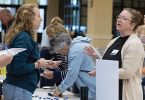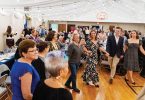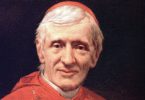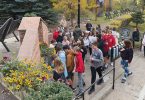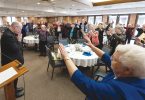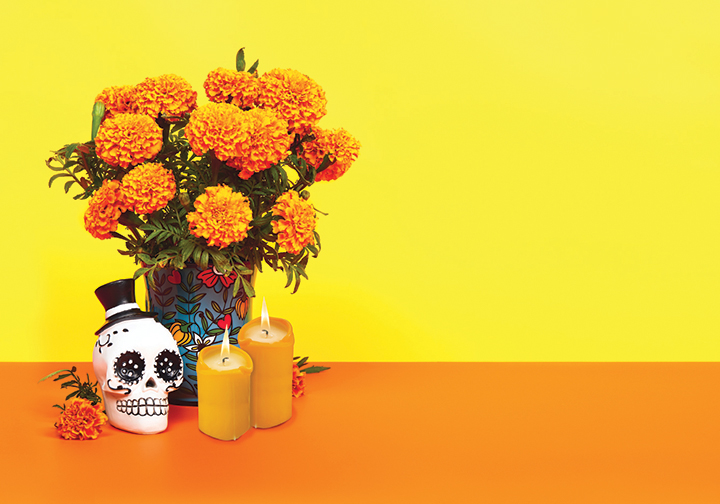
by Therese Horvat
Special to The Leaven
KANSAS CITY, Kan. — This year’s combined observance of All Souls’ Day and “Día de los Muertos,” the “Day of the Dead,” at Mt. Calvary Cemetery here, will focus on remembering deceased loved ones with emphasis on their return to the Lord through the power of Christ’s resurrection.
Father Peter Jaramillo, SSA, will celebrate an indoor bilingual Mass on Nov. 2 at 11 a.m. in the mausoleum chapel at the cemetery, located at 38th and State Ave. Father Peter is pastor of All Saints Parish and St. Mary-St. Anthony Parish, both in Kansas City, Kansas.
Catholic Cemeteries of Northeast Kansas invites persons of all cultures and ethnicities to bring photographs of their deceased loved ones, artificial flowers and other items customary to the “Día de los Muertos” observance (with the exception of food) to place on a display table.
Father Peter explained that “el Día de los Muertos” dates to pre-Christian times in Mexico and the understanding that in death, spirits roam the earth until they find peace. Living persons assist them on their journeys with remembrances, offerings of food and flowers, and celebration of their lives.
As Christians, Father Peter said that Catholics should go beyond those beliefs and express deep faith in the healing power of the Resurrection and the expectation of life eternal in the Lord’s presence.
Father Peter went on to contrast “Día de los Muertos” with All Souls’ Day.
“The holy souls in purgatory, the faithful departed, don’t need to eat food for the dead (called ‘el pan de los Muertos’),” he said, “because they have already eaten from ‘el Pan de Vida,’ partaking in the bread of life, Jesus Christ, our risen Lord.”
Father Peter believes that the degree of the significance individuals assign to All Souls’ Day and “Día de los Muertos” reflects how they deal with death and mourning. Both All Souls’ Day and “Día de los Muertos” remember those who have died.
The traditional All Souls’ Day observance encourages Catholics to pray for family members, friends and others who are deceased and for those who may be in purgatory, awaiting transition to eternal life in heaven. Church teaching holds that prayers of the living support this transition.
Beyond praying for the deceased, “Día de los Muertos” welcomes the departed for an annual visit to celebrate their living memory. Families gather at the gravesites of loved ones for a reunion of sorts. “Ofrendas,” or “offerings” on home altars, remember and rejoice over the deceased with photographs, candles, their favorite foods and marigold flowers. Skulls and skeletons are prominent symbols of the Day of the Dead to remind that life is short.
Father Peter recalled that his immediate family has not had a strong practice of observing “Día de los Muertos.” However, they have maintained strong faith traditions across generations. His grandfather had a home altar constructed that remains in the Jaramillo household. For his grandfather, the altar — made from an old dresser — served as a visible expression of thanksgiving for escaping persecution in Mexico, arriving in the United States, and securing a job and a home.
Father Peter noted that his grandfather was a very religious person and a strong Catholic who prayed for religious vocations among his children. Although none of that generation pursued a vocation to the religious life, unbeknown to Father Peter until 10 years into his priesthood, his mother had dedicated him, her firstborn, to God from his birth.
As a member of the Society of St. Augustine, Father Peter shares the religious order’s long tradition of praying for the dead. This includes devotion to St. Nicholas of Tolentino, the first Augustinian friar to be canonized. St. Nicholas was a great advocate of prayer for the souls in purgatory.
For more information about the Nov. 2 observance at Mt. Calvary Cemetery, call Catholic Cemeteries at (913) 371-4040, or send an email to: information@cathcemks.org.

